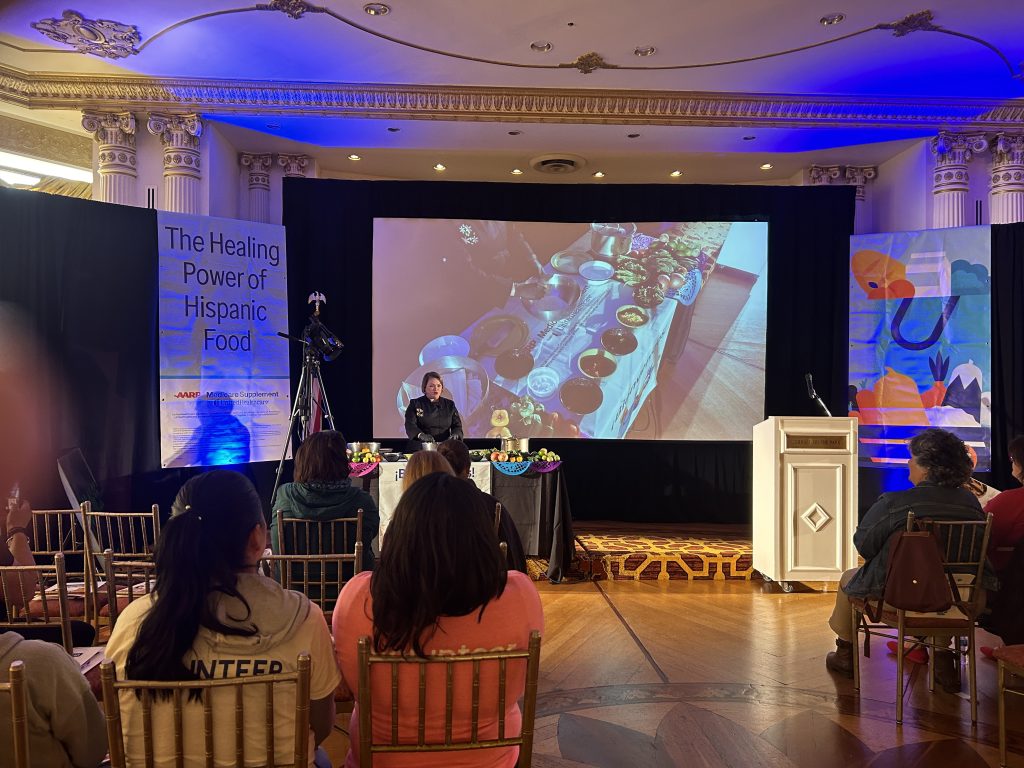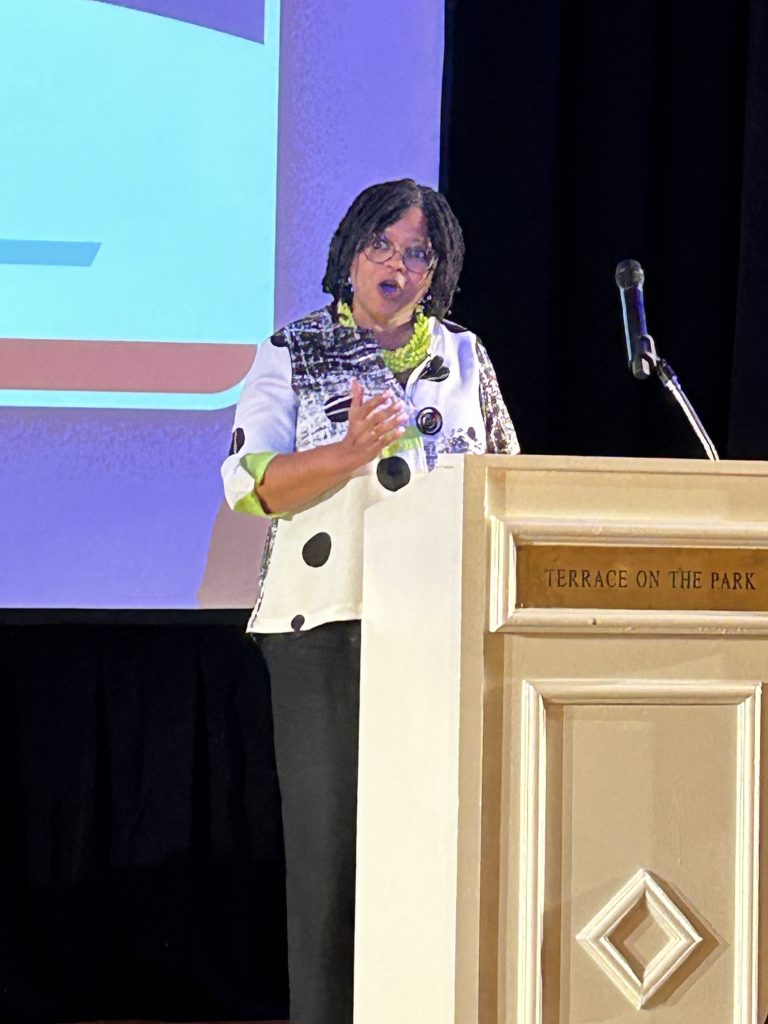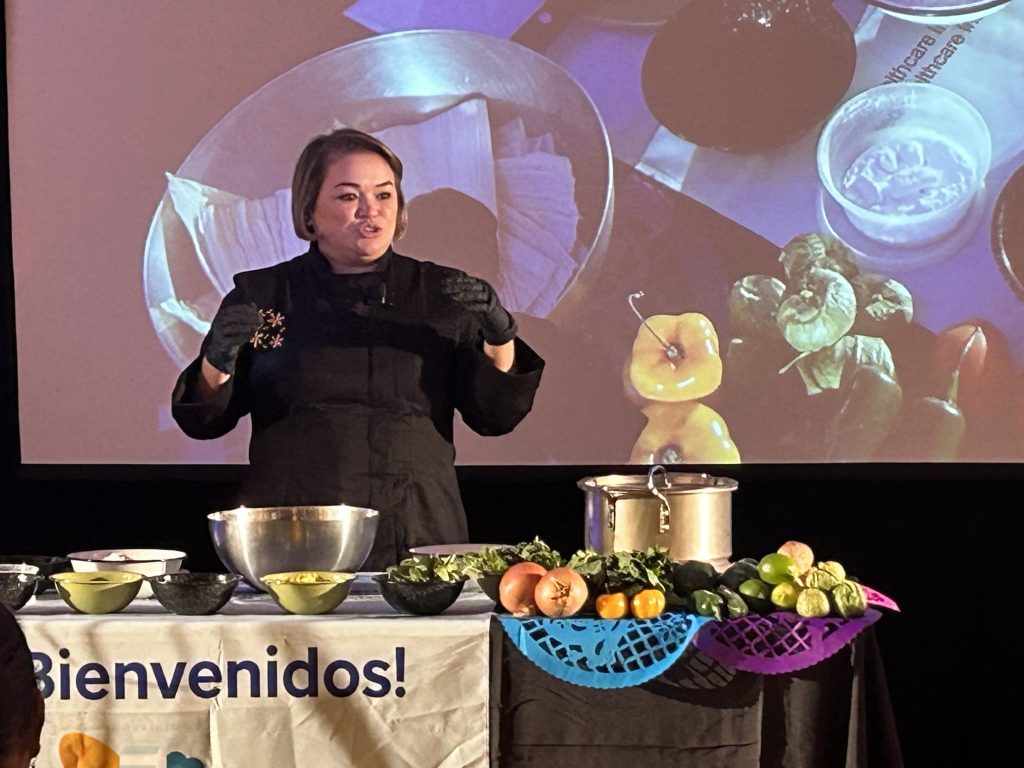
By: Joe Thristino
“The Healing Power of Hispanic Food” – a free event sponsored by ¡Hay Mas Adelante!, United Healthcare and AARP – aimed to highlight the incredible nutritional value inherent to Latino food and how utilizing these delicious ingredients effectively can drive a healthy lifestyle.
“Genes on their own don’t determine disease,” dietician Sylvia Melendez-Klinger declared to the heedful attendees across both a morning and an afternoon time slot in the hotel’s Regency Ballroom. “We can do something about it.”
Melendez-Klinger was one of three keynote speakers bringing an array of wellness advice and Hispanic heritage. They were introduced and bookended by United Healthcare rep Rita Tolbert, who set the tone for the proceedings by emphasizing the importance of “health equity”, specifically among Hispanic peoples.
After all, the leading causes of death in Latino communities are predominantly diet-related, such as heart disease and diabetes. “One in three Latinos sixty-five and older have diabetes,” Melendez-Klinger said with more than a little exasperation. “The number used to be one in five.”
She proceeded to explain how preparation and portion can unlock the “incredible power” of Hispanic ingredients. A Puerto Rican raised in Mexico, Melendez-Klinger knows all too well of the deep-frying and plate-overflowing pitfalls often endemic to Hispanic dining.
To combat these habits, she suggested using smaller dinnerware (to limit portion size) but still having at least three food groups on a plate; five if possible. Salsas are a great way to insert fruit and Vitamin C alongside your proteins (such as beans, wonderfully nutritious), vegetables, whole grains, and dairy. And if you absolutely need that empanada – and who doesn’t from time to time – bake instead of deep-frying. A tip from Melendez-Klinger to still get that empanada crunch from the oven: a little egg-white wash.

Antioxidants are especially key, as Melendez-Klinger compared the oxidation process inside the body to what happens to a metal nail rusting and corroding. “And colors equal antioxidants,” the dietician said. “You want a rainbow on your plate.”
United Healthcare’s Dana Parra-Stanglmaier, a native of Mexico, filled the middle of the bill with an extended information session on Medicare. There were more than a few inquisitive audience members, and the question-and-answer exchange centered around these health insurance complexities went on for some time.
That was followed up by the third and final guest speaker, Chef Lizzeth Martinez. A San Antonio-based restaurateur who co-owns and operates the renowned Naco Mexican Eatery, “Chef Liz” gave both a history lesson and a recipe demonstration from the vibrant array of ingredients laid out on the stage’s table.
Martinez echoed Melendez-Klinger’s previous concerns with the Hispanic community’s compulsion to deep-fry, yet also expounding on why it was a style of cooking passed down from previous generations. “Our ancestors were much more active,” she explained, a product of the long days and laborious occupations many of them had. These jobs are less prevalent for many in the community today but the cooking habits have unfortunately stuck.

Practicing what she and the others were preaching, Chef Liz got down to the fun of cooking. Showcasing a step-by-step vegetarian tamale recipe, Martinez maximized the substantial nutrition naturally imbued in touchstone Hispanic ingredients. Attendees received a copy of this recipe to take home along with a folder of other health-centric information and references.
One walked away from this event with an important realization: Hispanic food is more than a tasty cuisine loved the world over. It’s medicine.


